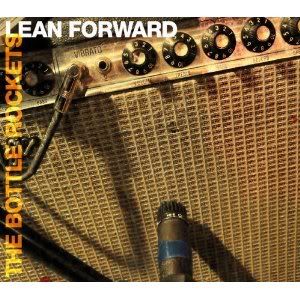Quote:
Jay was born in Fitzgerald, Georgia. His father and grandfather were both slaves in Washington County, Georgia. His grandfather was also a banjo player and imparted a vast repertoire of old-time and folk songs to Abner. He started playing in medicine shows when he was 5. In 1932 he joined the Silas Green Minstrels and would later go on to lead the WMAZ Minstrels on Macon radio from 1946–56, before going solo. He spent many years travelling the American South and playing concerts from his “converted mobile home that opened up into a portable stage, complete with amplification and home furnishings”[1]. These concerts, as evidenced in his recordings, were often equal parts spoken word (jokes, philosophical asides, rants) and music. Common instruments on his recordings include harmonica, drum kit, a six-string banjo (that Jay claimed was made in 1748), and the “bones”, which were chicken and cow bones that had been bleached in the sun and used to create percussion. Jay’s song repertoire included field songs, Pentecostal hymns and minstrel tunes. He once described himself as the “last working Southern black minstrel”. He also performed original material that was mostly secular, and subjects ranged from politics, relationships, war, the bible and depression. In later years he held a residency, playing shows and selling his LPs and cassette tapes at Tom Flynn's Plantation Restaurant in Stone Mountain, Georgia. Anthony Braxton, renowned American composer and philosopher, called Jay an "American Master"[2].
For many years, Jay released his music and monologues through his own record label, Brandie Records (so-named for his daughter). In 2003 Subliminal Sounds from Sweden released a compilation of his work, which had been out of print since the 1970s, drawing from three of Jay’s best recordings. In 2009 Portland-based label Mississippi Records released another compilation of his work, this time on vinyl. These re-releases helped garner a degree of renewed interest in the artist, including Vice Magazine naming it album of the month (Vol. 10 #11). Recordings Jay made three months prior to his death are currently being prepared for release by Mississippi Records.
Quote:
A crazed psychobilly quartet which later fragmented into the Workdogs and '68 Comeback, the Gibson Bros. formed in Ohio during the mid-'80s, playing barely competent yet totally energetic bluesy roots rock which later became a staple of indie rock through groups like the Jon Spencer Blues Explosion, Mule, and the Delta 72. Vocalist/guitarists Don Howland (formerly with Great Plains) and Jeff Evans were the most stable members of the group, though third guitarist Dan Dow and drummer Ellen Hoover also appeared on the Gibson Bros.' first three albums, the obscure 1986 cassette-only Build a Raft plus the Homestead releases Big Pine Boogie and Dedicated Fool.
Quote:
Stupor Hiatus culls the complete recorded works of the original Mike Rep and the Quotas, dating back to 1974 and moving forward into the early 1990s. Essentially a reworking of the Stupor Hiatus Vol. 2 LP released by Siltbreeze in 1992 (minus the questionable original artwork and mysterious French-language insert), this definitive collection is that record in its entirety plus six additional tracks, four of which have never before been released.
This double-LP includes the legendary “Rocket to Nowhere,” a lovely instrumental interpretation of the 13th Floor Elevators’ “She Lives in a Time of Her Own,” a cover of Roky Erickson’s “Creature with the Atom Brain,” a shout-out to the Strapping Fieldhands (“In the Pineys”) and fifteen other immortal tracks.
Those who already know, know. But if you’re only familiar with the name Mike Rep as a producer for such acts as Guided By Voices, Strapping Fieldhands and Times New Viking, here’s your chance to get caught up with a back catalog of xtraordinary capacity. Before there were peckerwoods buzzing about lo-fi, Mike Rep—fed by a love for B-grade horror flicks, (the aforementioned) 13 Floor Elevators, Velvet Undergound, Kim Fowley and (blech!) The Doors—was concocting a mash of home-recorded punk, pop and psychedelia for a few fortunate ears. This isn’t the Sunset Strip or Lower East Side, folks, it’s Grove City, Ohio, a scene ruled by codeine, cannabis and Carling. So be prepared to hunker down with a fuzzy, furry and fried collection of 20-plus years of sound from the vaults of one of America’s most important legends in the flesh. The Creeping Flesh, that is.









